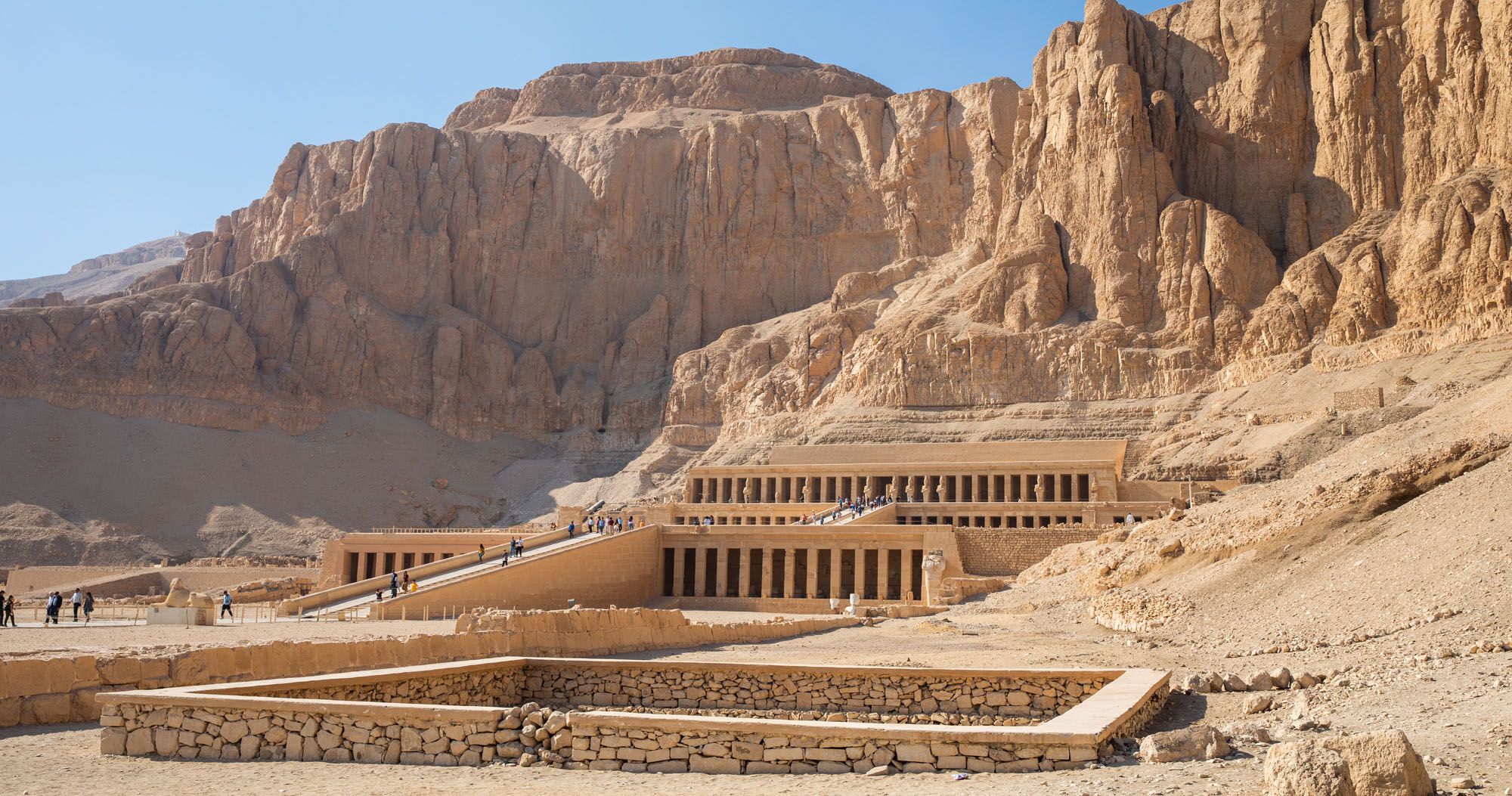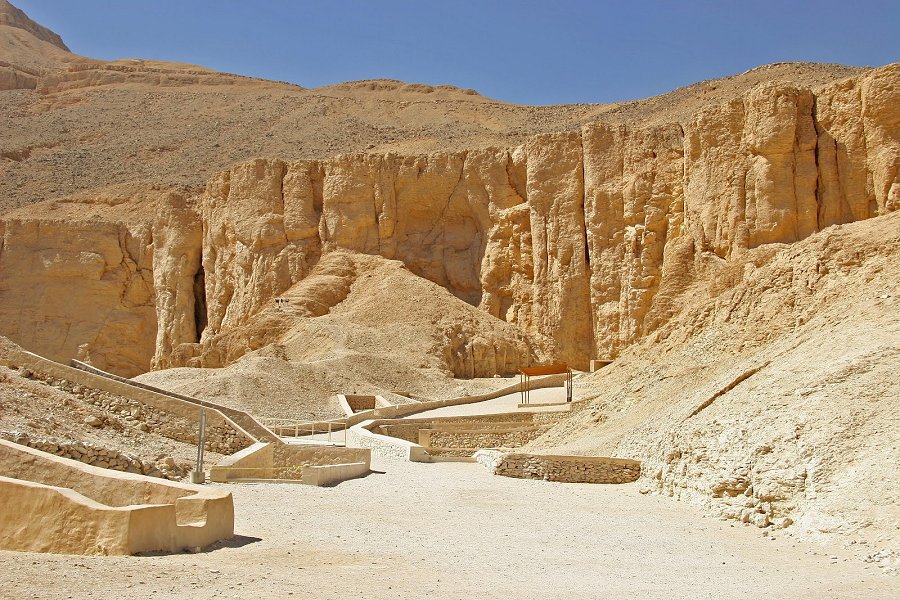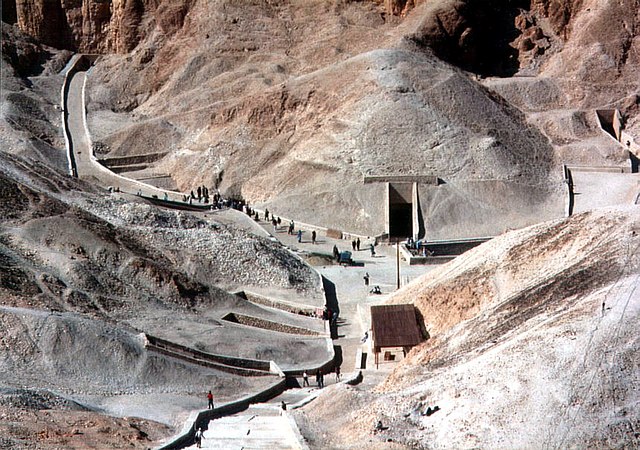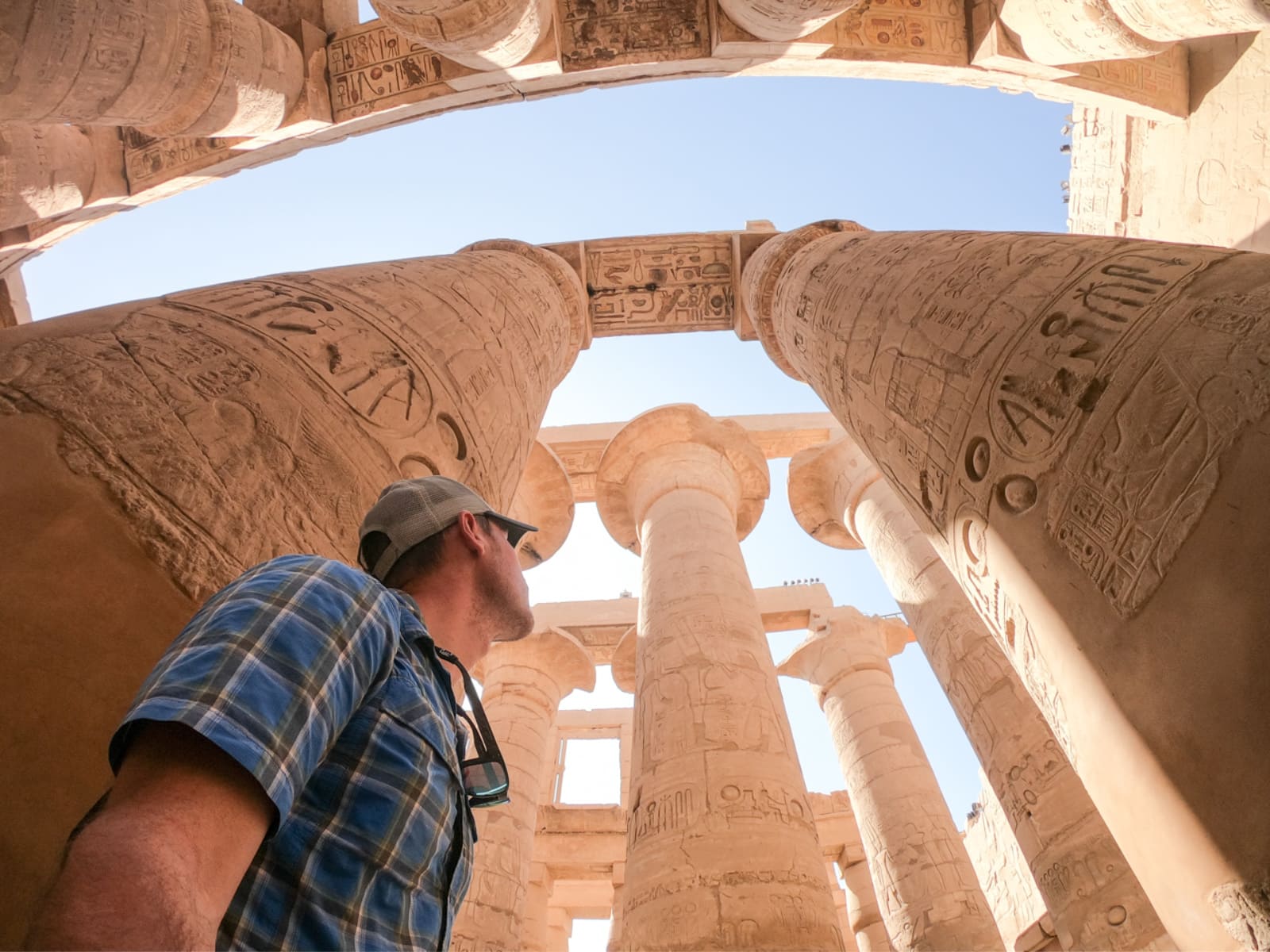Explore the Ancient Wonders of Luxor on a West Bank Tour
Nestled along the banks of the Nile, Luxor is a city like no other. Overflowing with ancient wonders, this destination attracts travellers from around the globe. And if you're looking to immerse yourself in the history of this magical city, there's no better way to do so than with a West Bank tour. From the Valley of the Kings to the legendary Tomb of Tutankhamun, this full-day private tour delves deep into the mysteries of ancient Egypt. So pack your bags and join us on an adventure of a lifetime as we explore the ancient wonders of Luxor.

Explore the Ancient Wonders of Luxor on a West Bank Tour
Lux, one of Egypt's greatest treasures, has a rich historical and cultural significance that draws tourists worldwide. The city is home to the world-famous West Bank, which is a must-see for any visitor to the country. The best way to explore the West Bank is to take a full-day private tour with a qualified Egyptologist guide. Here are some highlights of the tour:
- Valley of the Kings: The Valley of the Kings holds 63 tombs of famous pharaohs from the New Kingdom (1570-1050 BC), including King Tutankhamun. The tombs are filled with beautiful artistic decorations showcasing ancient rulers' heritage.
- King Tutankhamun Tomb: The tomb of Tutankhamun is one of the most popular attractions of Luxor's West Bank. The importance of this tomb is undeniable, as it contains the most significant archaeological find of the 20th century: the wealth of the young pharaoh.
- Temple of Queen Hatshepsut: The temple of Queen Hatshepsut at Deir el Bahari is known for its architectural features. The temple was built to honour one of the most successful pharaohs in history. It is considered the most suitable example of classical architecture of ancient Egyptian Egypt across its huge three terraces where the beautiful festival valley was held.
- Colossi of Memnon: The Colossi of Memnon are two massive stone statues of the Pharaoh Amenhotep III. These statues have become one of the most famous icons of Luxor.
Visitors who take the private Luxor West Bank tour will surely enjoy the undivided attention of their guide and the personalized experience. Furthermore, the great value of this tour includes hotel pickup and round-trip transport, making it ideal for first-time visitors to Luxor or those short on time. With so many things to see and experience, the private West Bank tour is the perfect way to explore the ancient wonders of Luxor [1][2]

Overview of Luxor and its rich historical and cultural Significance
Lux, also known as the City of Immortal Royalty, is located in Upper Egypt on the east bank of the Nile River. With a population of over half a million people and an area of 417 square kilometres, the city boasts some of the most extraordinary monuments and artefacts in the world. Luxor is a haven for history and culture lovers, a city steeped in ancient Egypt's religious and political history.
The city is home to numerous well-preserved temples and tombs that highlight the grandeur of the ancient civilization. Luxor was once the capital of Egypt during the New Kingdom period (1550-1077 B.C.), dedicated to the god Amun-Ra, making it a crucial site for religious ceremonies and royal rituals. Luxor is divided into two main areas: the East Bank, where the city centre is located, and the West Bank, which houses the Valley of the Kings and the Valley of the Queens.
Luxor's historical sites attract visitors from around the globe, referred to as the world's greatest open-air museum. The city is famous for its magnificent monuments and temples, such as the Temple of Karnak, the largest temple complex in Egypt, which is dedicated to the god Amun-Ra, and the Luxor Temple, located in the heart of the city, constructed for the veneration of the god Amun and to celebrate the annual Opet Festival.
Moreover, the Valley of the Kings and Queens on the West Bank of Luxor is the final resting place for Pharaohs, royal women, and their children. This site offers visitors a unique opportunity to explore ancient tombs and learn about the intricacies of the afterlife beliefs of the ancient Egyptians. Luxor also witnessed Greek and Roman influence, which blended with its original Pharaonic architectural styles, impacting Luxor's cultural diversity.
Luxor's climate is typically hot, with average temperatures of 104°F in summer and 71.6°F in winter. Luxor's rich historical and cultural significance never fails to marvel visitors from all over the globe, making Luxor a bucket-list destination for every traveller. [3][4]

Highlights of the full-day private Luxor West Bank tour
Embarking on a full-day private Luxor West Bank tour is a must for anyone visiting Egypt. With the help of a qualified Egyptologist guide, you can explore some of the most incredible ancient wonders Luxor has to offer. Here are some highlights of what you can expect to see on this unforgettable tour:
1. The Valley of the Kings: This UNESCO-listed site boasts an impressive collection of tombs, including that of the famous King Tutankhamun. With your private guide, you'll gain a deeper understanding of each tomb's significance and its fascinating history.
2. The Temple of Queen Hatshepsut: Also known as Deir el Bahari, this temple is a true architectural marvel. It features an impressive series of terraces and colonnades at the base of towering cliffs. Your guide will provide you with insight into the reign of this powerful female pharaoh and help you appreciate the rich cultural context behind her impressive temple.
3. The Colossi of Memnon: These statues of Amenhotep III are the only remaining structures from his temple, but they are nonetheless impressive. Standing over 18 meters tall, they make for an incredible photo opportunity.
4. Karnak and Luxor Temples: On the second day of the tour, you'll visit two more iconic landmarks in Luxor. Karnak Temple is the largest religious structure ever built and will leave you in awe. On the other hand, Luxor Temple is a stunning example of New Kingdom temple architecture.
With a private guide and flexible booking options, this Luxor West Bank tour is the perfect way to explore the wonders of ancient Egypt at your own pace. Don't miss out on this once-in-a-lifetime opportunity! [5][6]

Description of the Valley of the Kings
The Valley of the Kings is a world-renowned archaeological site on the Nile River's west bank in Luxor, Egypt. It is a popular tourist destination known for its unique collection of tombs and breathtaking ancient ruins. Used as a royal burial chamber for nearly 500 years, it contains the remains of 63 of the most important pharaohs in the history of ancient Egypt.
The valley is known for its stunning rock formations, which add to its beauty. The ancient Egyptians considered the rugged terrain of the valley to be a gateway to the afterlife. The Valley of the Kings is a UNESCO World Heritage Site, home to the impressive ruins of the ancient Egyptian city of Thebes. Tourists can explore the archaeological wonders of the area with an Egyptologist guide who is on hand to answer any questions.
Visitors can enter the valley through a sandy path which leads to the entrance gate. The site is packed with impressive tombs, which are open to visitors. Various information panels are located throughout the site providing information about the pharaohs and their tombs.
Among the most important tombs in the Valley of the Kings are the tomb of Pharaoh Tutankhamun and all of his treasures. Tourists can also explore the magnificent Temple of Queen Hatshepsut and learn the fascinating history of the Colossi of Memnon. There are fantastic photo opportunities available along Luxor’s West Bank as well. The Valley of the Kings is truly a must-visit site for anyone interested in ancient Egyptian history and [7][8]

Importance of King Tutankhamun's tomb
One of the highlights of the Luxor West Bank tour is the opportunity to explore the famous tomb of King Tutankhamun. The young pharaoh was only 19 years old when he died, and his tomb was discovered in 1922 by Howard Carter. This discovery was one of the most significant archaeological finds of the 20th century, as it shed light on the life and reign of a relatively unknown pharaoh.
The tomb of King Tutankhamun is located in the Valley of the Kings and is the best preserved of all the tombs discovered in the valley. The tomb contains impressive treasures, including a solid gold coffin, life-sized statues, and exquisite jewellery.
Exploring the tomb with an expert Egyptologist guide is an incredible experience, as they paint a vivid picture of life in ancient Egypt and provide detailed insights about the pharaoh. Visitors can enter the burial chamber and see the sarcophagus and mummy of King Tutankhamun up close.
It is worth noting that visiting the tomb of King Tutankhamun requires an additional ticket on top of the main entrance fee for the Valley of the Kings. However, the extra cost is well worth the chance to witness one of the most important discoveries in history.
Overall, the tomb of King Tutankhamun provides a fascinating glimpse into the world of ancient Egyptian royalty and is a must-visit destination for anyone interested in history or archaeology. [9][10]

Experience exploring ancient tombs with an expert Egyptologist guide
Exploring ancient tombs is an incredible experience that many people dream of having, and it can be made even more special when done with an expert Egyptologist guide. Here are some reasons why the experience of exploring ancient tombs with a knowledgeable guide is a must-do on your Luxor West Bank tour:
1. Insightful commentary: An Egyptologist guide can provide insightful commentary on the history of the tombs and the people buried within them. They can point out interesting details you may have missed and give you a deeper understanding of the significance of the tombs in Egyptian history.
2. Access to restricted areas: Some tombs may be closed to the public, but an Egyptologist guide can provide exclusive access to these restricted areas. This means you can see parts of the tombs that are not usually accessible to regular visitors.
3. Personalized experience: With a private tour, you can enjoy a personalized experience that caters to your interests and needs. You can ask your guide questions and explore at your own pace without feeling rushed or crowded.
4. Enhanced safety: Exploring ancient tombs can be challenging and potentially dangerous, especially for those unfamiliar with the terrain. An Egyptologist guide can ensure you navigate the tombs safely and provide the necessary precautions to avoid injury.
Overall, exploring ancient tombs with an Egyptologist guide is a truly magical experience that can transport you back in time to the glory days of ancient Egypt. Don't miss out on this incredible opportunity on your next Luxor West Bank tour. [11][12]

Overview of the Temple and its Significance
Queen Hatshepsut, also known as Djeser-Djeseru, is one of the most iconic structures you can explore on a Luxor West Bank tour. This temple is dedicated to the cult of Amun and stands as a testament to the prosperity and economic might of the Pharaonic era. Built-in the 15th century BC, the temple is on a cliff above the Nile River, providing visitors with stunning panoramic views of the surrounding area.
The temple's architecture is unique compared to other ancient Egyptian structures. It comprises three terraces connected by long ramps, with each terrace, featuring an array of chapels, columns, and statues. The Birth Colonnade or Solar Barque Stations is a highlight of the temple, telling the story of Hatshepsut's divine creation through the journey of the sun disk, carried by the serpent Mehen.
The Punt Colonnade is another highlight, which is located on the middle terrace. This colossus structure tells about Hatshepsut's expeditionary mission to the land of Punt and the trade of exotic goods like frankincense and myrrh, which were brought back to Egypt. There, you can see the images of Punt's people, exotic animals, and other valuable goods that the Egyptians were eager to collect.
Finally, both the Temple of Hathor and the Temple of Anubis form the third section, and both of these shrines were dedicated to the gods of death and resurrection. Besides, some iconic statues of Hatshepsut are worth seeing. These include the famous red granite Hatshepsut Obelisk, which stands in front of the temple, standing tall at 29 meters high. Overall, the Temple of Hatshepsut is an unmissable part of any Luxor West Bank tour, and it is a testament to the ingenuity, artistry, and power of ancient Egyptian civilization. [13][14]

Architectural features of the temple
The of Queen Hatshepsut is one of Egypt's most unique architectural structures. Designed by the architect Senenmut, it was built to honour and celebrate the reign of the famous female pharaoh, Queen Hatshepsut. Here are some of the most notable architectural features of this stunning temple:
- The Temple of Queen Hatshepsut consists of three terraces connected by long ramps. The terraces are adorned with colonnades, statues, and bas-reliefs.
- The Birth Colonnade is one of the most remarkable features of this temple. This colonnade tells the story of Hatshepsut's divine creation with Amun as her father. The scenes depict Hatshepsut's conception, birth, and crowned as the queen of Egypt. The colonnade also includes images of the gods and goddesses who watched over Hatshepsut during her reign.
- The Punt Colonnade is another impressive feature of the temple. This colonnade tells about Hatshepsut's expedition to Punt and the luxury goods she brought back to Egypt. The scenes include images of exotic animals, plants, and people from the land of Punt.
- The central courtyard is a magnificent open space used for various ceremonies, including the coronation of Hatshepsut. The courtyard is surrounded by chapels dedicated to gods and goddesses, including Hathor and Anubis.
- The Upper Terrace is the highest level of the temple and offers stunning views of the surrounding landscape. It is also the location of the Sanctuary of Amun, which was the most sacred part of the temple.
Overall, the Temple of Queen Hatshepsut is a remarkable example of the classical architecture of ancient Egypt. Its colonnades, ramps, and terraces are a testament to the skill and creativity of ancient Egyptian engineers and architects. A visit to this temple is a must for anyone interested in the history and culture of ancient Egypt. [15][16]

The rich history and cultural context of Queen Hatshepsut's reign
Queen Hatshepsut's reign was a significant period in Ancient Egyptian history. She ruled during the 18th dynasty and was the second historically confirmed female pharaoh. Her reign lasted around 22 years and was characterized by peace and prosperity. Here are some of the historical and cultural highlights of her reign:
- Hatshepsut was the daughter of Pharaoh Thutmose I and later married her half-brother Thutmose II. Their infant son Tuthmosis III was too young to rule when he died, so Hatshepsut ruled as a regent on his behalf.
- During her reign, Hatshepsut introduced a higher calibre of architecture, which remained incomparable worldwide for hundreds of years. She also re-established trading relationships and increased Egypt's wealth, leading to extended peace and prosperity.
- Hatshepsut assigned Senemut, her royal steward and architect, to create the Temple of Hatshepsut, one of Egypt's greatest architectural masterpieces. The temple was essentially constructed for Hatshepsut's post-death worship and the glory of Amen-Ra, an Egyptian god. It is situated on the west bank of the Nile near modern-day Luxor and is considered one of the Wonders of Ancient Egypt.
- Hatshepsut's legacy was almost erased by her stepson, Tuthmosis III, who carried out a sweeping campaign to destroy her legacy. But her reign and achievements have been rediscovered in modern times through deciphering hieroglyphics and preserving her surviving architectural achievements throughout Egypt.
Overall, Queen Hatshepsut's reign was a time of peace, prosperity, and architectural achievements that have stood the test. Her legacy represents a significant period of Ancient Egyptian history, and her reign is a testament to the power of female leadership. [17][18]

Description of these iconic statues
The ancient wonders of Luxor are truly captivating, and the West Bank tour is the perfect opportunity to explore them. On this tour, you will experience rich historical and cultural significance, including a visit to the Valley of the Kings and the Temple of Queen Hatshepsut. One of the most stunning features of the temple is the iconic statue of Queen Hatshepsut. Here's what you need to know about these remarkable statues:
- The statues of Queen Hatshepsut are located at the entrance of the Mortuary Temple.
- These statues are made of limestone and stand almost 100 feet tall.
- They depict Queen Hatshepsut wearing the traditional kilt and the Nemes headcloth.
- At the base of each statue, small figures represent the queen's daughter and grandson.
- The statues were designed to represent the queen's power and strength.
- They were also meant to intimidate visitors and symbolize the queen's dominance over Egypt.
- The statues were damaged during the reign of Thutmose III, but over the years, they have been restored to their former glory.
Exploring these statues with an expert Egyptologist guide is an experience not to be missed. These statues testify to Queen Hatshepsut's reign and her impact on Egyptian history. So if you're planning on visiting Luxor, make sure to add the West Bank tour to your itinerary and marvel at the iconic statues of Queen Hatshepsut [19][20]
